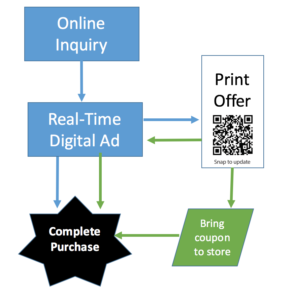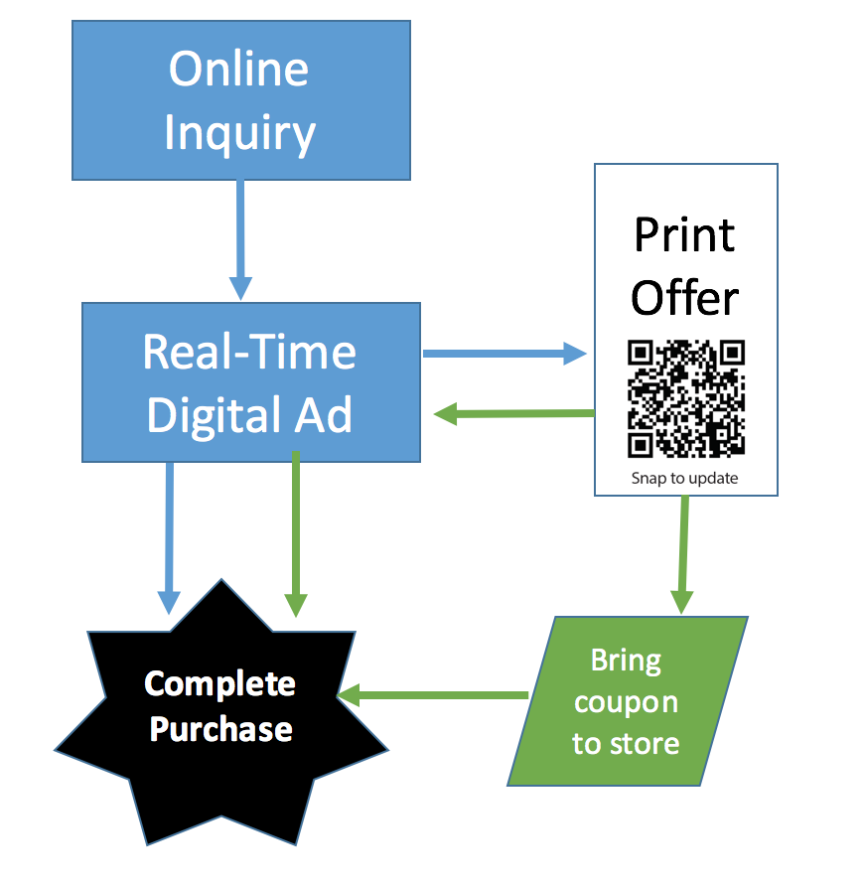Digital advertising campaigns have drawn budget away from print advertising for more than a decade now – but the tide may be turning. Digital advertising has faced a host of challenges recently including:
- Challenges with measurement and attribution
- Widespread fraud in click-through measures
- Increasing use of ad blockers by consumers
- New privacy regulations limiting data harvesting and email contact
While these challenges are daunting, there is a broader problem. Oversaturation of banner ads, pop-ups and email in response to a consumer’s search history has led to selective blindness. Consumers have learned to filter out unwanted information on the screen. Another factor impacting the effectiveness of a digital-only strategy is that many consumers shop on-line but complete the purchase offline. While e-commerce is growing, it still makes up only about 10% of total retail sales.
Why Does This Matter for Inkjet?
The challenges with online advertising underscore the need for print including direct mail, on-statement marketing and point-of-purchase advertising. Well-targeted advertising is more likely to reach the customer through the snail mail than through the e-mail. In addition, research conducted in 2015 by the Center for Neural Decision Making at Temple University’s Fox School of Business in partnership with the U.S. Postal Service Office of Inspector General found that consumers are more likely to remember physical ads and have a stronger emotional response to them than to digital versions.
But, if printed advertisements are being used as follow up to an online inquiry they need to be FAST. In most scenarios, getting a mail piece 2 weeks after an inquiry just won’t cut it, and getting a generic mailer is even worse.
For print to show a compelling Return On Marketing Investment (ROMI) versus digital, it needs to be:
- Delivered in 1 – 3 days from time of inquiry
- Be relevant and personalized to the recipient
- Be consistent with the brand and the brand’s online offers
That’s where high speed inkjet comes in. It’s faster and cheaper than toner and also faster, and often nearly cost-neutral to offset campaigns with toner personalization. With the proper workflow, on-demand campaigns can be developed that deliver batches of as few as 10 mail pieces or upwards of 100 thousand daily depending on the level of online activity. Effective customer-facing workflow can also allow brands to deliver messaging on bills and statements that complement online campaigns. This is particularly effective for companies highlighting rewards programs. Inkjet can also be used to drive relevance and timeliness to point-of-purchase signage – another way to keep a device fully utilized during off-peak hours.
Can Inkjet Win Back Direct Mail Budgets?
Even with the current challenges, digital advertising is not going away. However, inkjet has helped win back some budget and slow the decline in mail volumes. The greatest ROMI is achieved when inkjet production is integrated with digital campaigns.
If an online offer is not accepted on the first pass, a mail campaign can be triggered that is tailored to the recipient and delivered with a specific offer period. The campaign should include ways for the recipient to respond to the offer online or offline and, ideally, link to the latest offers (think QR code or Augmented Reality). With an integrated campaign, there is no reason to have an offer completely expire. Send them online for the latest offer, specifically tailored to their interests and based on the latest data.

Tailored and timely campaigns that marry the immediacy of online interaction with the fast-follow of brand consistent, full-color inkjet provide the best leverage for scarce marketing dollars. Do you have what it takes to sell these types of solutions to your customers? If not, give us a shout and we can deliver sales training or help you find a marketing partner to drive more volume to your inkjet device. Don’t have inkjet yet? Let us help you figure out if inkjet is a good fit for your business.

